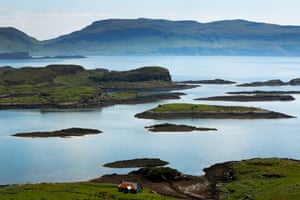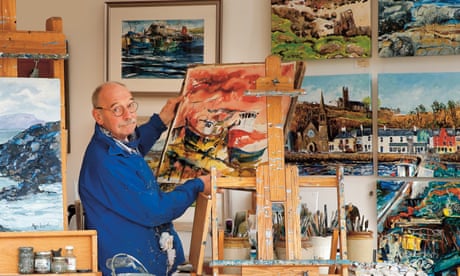Tales of witches and doomed pipers, plus the promise of hidden treasures beneath the waves, fuel a creative spirit on the Isle of Mull that expresses itself through music, art and whisky
by Louise Brown
Last modified on Fri 31 May 2019 12.24 BSShar
Visitors to the Isle of Mull – Scotland’s fourth-biggest island – are mesmerised by its many treasures. Everyone who lives here – be they artists, musicians or whisky makers – lives in symbiosis with their surroundings, feeding off the folklore embedded in the island’s soul.
The story of MacKinnon’s Cave, said to be one of the deepest sea caves in the Hebrides, will chill the heart of many a musician. A piper who was walking his dog in the cave came to a sticky end when a female ogre (or fairy, depending on your folklore source) became unimpressed with his performance. The dog survived, but emerged crazed and hairless with fright. Some claim to have seen the doomed bald canine walking along the top of the caves – and if you’re brave enough to go inside, his harrowing howls can apparently be heard whistling in the wind.
Then there’s the ancient Lochbuie stone circle: nine granite rocks that sit silently in their own natural amphitheatre, overlooked by the slopes of Ben Buie. Although most visitors find it a place of tranquility, legend has it that the area is haunted.

More chilling still is the tale of idyllic Loch Ba, reputed home to Cailleach Bheur, one of Scotland’s most powerful witches. Once every 100 years, before any other creature had awoken, the blue-faced old hag would submerge herself in the water of the loch, and be transformed into an enchanting beauty. The spell was broken by the bark of a dog who had awoken before she’d finished bathing. The witch, also known as the queen of winter, is said to have created the beautiful rolling hills on the isle by striding across the land and dropping rocks from her basket to form her own stepping stones.
The sporadic appearance of valuable artefacts in Tobermory Bay, meanwhile, have convinced many that a sunken Spanish ship from 1588 – either the Florencia or the San Juan de Sicilia – lurks beneath the waves. Having fled the Channel in the wake of the Armada’s defeat, it’s thought to have sunk in the bay, taking its rumoured cargo of £300,000 of gold bullion – which would now fetch more than £30m – with it.

There are more riches in the bay than Spanish booty, however. In a town built as a fishing port – that has since developed an acclaimed arts scene, with its own gallery and theatre group – one thing you can count on is fresh seafood; the many quaint restaurants and pubs serve crustaceans that go from boat to plate in minutes.

'Mull is the most magical place to paint, create and fall in love'
Paid for by Tobermory
You could even be lucky enough to see dolphins, whales and basking sharks just off the shore. Golden and white-tailed eagles have also made this picturesque island their home, as have otters and an abundance of other birds and mammals.
The island is also home to the famous Tobermory Distillery, established in 1798. One of Scotland’s oldest distilleries (and the only one on the island), it produces single malts with a captivating charm that are expressive by nature and inspired by the bright, Instagram-perfect buildings that line the waterfront.
No comments:
Post a Comment